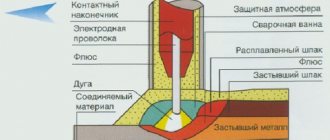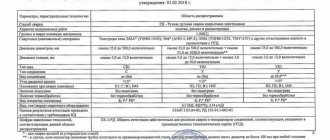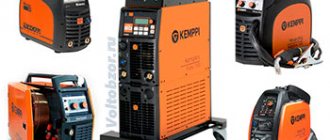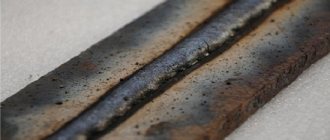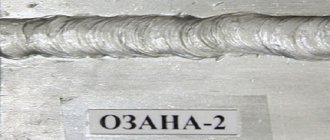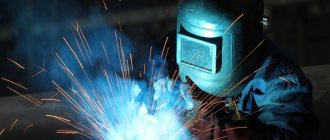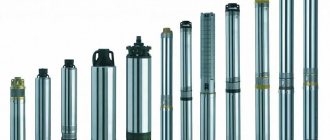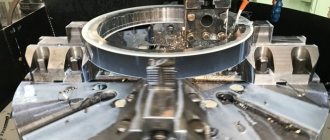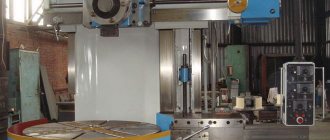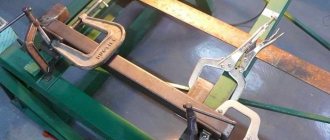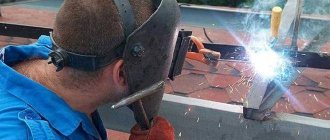Any practicing welder knows that oxygen has a negative effect on the quality and durability of the weld. Oxygen entering the weld pool promotes increased oxidation and causes cracks. There are many ways to get rid of this problem: from special metal processing to the use of special components, for example, fluxes.
One of the most popular methods of high-quality joining of metals is automatic submerged arc welding. It can be used to weld difficult metals such as copper, aluminum and stainless steel. Automatic welding speeds up and simplifies work, and the flux performs a protective function. In this article, we will briefly explain what automatic submerged arc welding is and what is the technique of automatic submerged arc welding.
general information
Automatic submerged arc welding is a technology whose essence is no different from classical arc welding. The metal melts due to the high temperature that is formed due to the electric arc. Below is a diagram of automatic submerged arc welding.
The only difference between automatic welding and any other is that most of the processes are performed not manually, but using special machines. For example, wire feeding and arc movement. Well, in our particular case, all these operations are performed under a layer of flux applied to the surface of the metal.
Welding mode selection
There are several modes that always need to be selected for each individual task.
| Metal thickness, mm | Wire diameter, mm | Welding current, A | Voltage, V | Welding speed, m/h |
| 3 | 2 | 250 — 500 | 28 — 30 | 48 — 50 |
| 5 | 2 | 400 — 450 | 28 — 30 | 38 — 40 |
| 10 | 5 | 700 — 750 | 34 — 38 | 28 — 30 |
| 20 | 5 | 750 — 800 | 38 — 42 | 22 — 24 |
| 30 | 5 | 950 — 1000 | 40 — 44 | 16 — 18 |
The modes from the table are suitable for low-carbon, medium-carbon and high-carbon steel.
The role of flux
With automatic welding everything is clear. But what about flux? What it is?
Flux is a special substance (can be produced in the form of powder, granules, pastes and liquids) with positive properties. Fluxes are fed in a thick layer directly into the welding zone, protecting it from the negative effects of oxygen. Flux also protects the metal itself, promotes stable arc burning, reduces the likelihood of metal spattering, and even changes the chemical composition of the weld if necessary.
Types of fluxes used
Before you carry out submerged arc welding, it would be nice to know what types there are. First of all, all fluxes are divided according to their intended purpose. They can be used for welding carbon and alloy steels, for high-alloy steels and for non-ferrous metals. This is the first thing you should pay attention to before purchasing flux.
Fluxes can also be fused or ceramic. Their difference is in composition. In most cases, fused flux is used, since it is relatively universal and inexpensive. With its help, you can effectively protect the weld pool from oxygen. But don’t expect any special qualities from the fused flux. If you need truly excellent weld properties, then choose a ceramic flux. It provides excellent quality.
Also, fluxes can be chemically active and chemically passive. Active flux contains acids that can not only protect the metal during welding, but also lead to corrosion. So be sure to remove flux thoroughly after use. Passive fluxes are not used in automatic welding because they do not have sufficient properties for this. Often you will find a passive substance when soldering in the form of wax or rosin.
By the way, about the manufacturers. This is a long-standing debate among all beginners and experienced welders. Some people believe that domestic companies produce inexpensive and effective flux, while others are all for imported components. We will not say unequivocally which is better, we will only say that in practice, both domestic and imported fluxes perform well if the welding technology is followed.
Automatic submerged arc welding technology
Every experienced welder understands the fact that atmospheric air entering the welding zone negatively affects the quality of the weld. Through its chemical reaction, it causes oxidation of the joint, which causes the formation of cracks. To avoid such complications, protective substances are used aimed at the welding area.
The most popular method of obtaining a reliable and strong connection between two metal surfaces is automatic welding using flux. Thanks to this method, even difficult metals can be bonded, such as copper, aluminum or stainless steel. Automatic welding takes less time and greatly facilitates the work, and the flux ensures the quality of the seam.
Submerged arc welding technology
The principle of working with flux is no different from conventional electric arc welding. The metal also melts under the influence of high heat from the welding arc.
But it is automatic welding that differs from all others in its convenience and speed. Most of the work is not done by a person, but by a machine that feeds the wire evenly and advances the heat source.
We are considering the option of using a layer of flux that covers the wire.
What is flux
Flux is a special composition that protects metal from oxidation by air. It is produced in powder, granular, paste and liquid form. Fluxes are fed in large quantities into the weld pool.
By displacing oxygen, they create an invisible coating for a reliable seam connection.
In addition, fluxes help ensure stable arc burning, do not create large amounts of spatter, and can improve the chemical characteristics of the metal.
Types of fluxes
Before purchasing flux, you should ask about its purpose. They are used for different types of metal:
- for carbon-containing and alloy steels;
- for highly alloyed compounds;
- for non-ferrous alloys.
Based on their composition, fluxes are divided into:
- fused, such fluxes are inexpensive and widely used by welders. Fused flux is a global component in protecting the weld, but nothing more;
- ceramic, if you need enhanced properties of the seam, then choose this type of flux.
And finally, according to their chemical properties, fluxes are:
- active, the mixture contains acids, which can subsequently lead to rust, so carefully knock down the resulting slag;
- passive, such fluxes are not used in automatic mode; their characteristics do not have the necessary properties. The only use of passive fluxes is in soldering, known as rosin or wax.
Which brand of flux to choose is up to everyone to decide for themselves. Russian manufacturers produce inexpensive and good flux, and foreign manufacturers can boast of stable quality. But in both cases, the protective properties of the substances really work. The main thing is to correctly follow the welding technology.
Pros and cons of submerged arc welding
Disadvantages of automatic welding:
- the possibility of welding is limited only to the lower seams;
- it is necessary to more carefully prepare the edges of the products being welded. There is a certain state standard according to which products are cleaned using hardware. After all, automatic mode is a machine that cannot correct or move the edge of the surface;
- high price of equipment and components. But this price is justified, because automatic welding is mainly used on an industrial scale.
A big and fat plus is the absence of the human factor. The master does not need to stand in uncomfortable positions, inhale harmful fumes, control the arc, and, in principle, does not even need to be able to cook. All processes occur automatically.
The only thing you need to be well versed in is setting the correct machine settings. The machine will take on the rest of the work, performing the connection at the highest level, both in a single copy and for the millionth series.
The essence of the process
As mentioned above, automatic welding involves more thorough surface preparation. Dust, dirt, grease stains, paint residues, rust and other debris are unacceptable in the technological process. The welding process can only be started on clean and degreased metal.
The automatic process using flux can begin after setting the settings specified by the operator.
To set the correct settings, a person must have theoretical knowledge of the welding machine. The thicker the metal, the larger the diameter of the electrode used.
At the same time, the welding current and arc voltage increase. But the speed of work decreases with large metal thickness.
On the Internet you can find a lot of calculations when working with different connections. This topic is large-scale and we will not touch on it in this article. We recommend that you study it yourself.
The filler wire used for the flux composition takes part in welding. It would be a good option to choose a rod from the same material from which the welding element itself is made. The additive is supplied automatically; the specialist only needs to fill it into the mechanism.
Flux is poured into a specially designated compartment on the welding machine. Accordingly, flux consumption will be greater when welding thick metals. Any flux melts due to temperature heating, and when it gets onto the weld area, it does not harm its properties, and often improves them. During the welding process, the flux foams and forms metal slag on the joint surface. It needs to be removed.
Welding in automatic mode using flux speeds up the work, but the speed does not affect the quality of the seam.
conclusions
We told you about automated flux welding, but there are both semi-automatic and manual welding using this composition. But we’ll talk about these technologies next time. We ask experienced craftsmen to share their tips and recommendations regarding automatic submerged arc welding.
Advantages and disadvantages
Automatic flux welding has many advantages. Its main advantage is the ability to fully automate the welding process. A welder does not even need to know how to weld; it is enough to know how to set up the equipment. Also, this welding method guarantees excellent quality of welded joints, since there is no human factor.
The technology of welding parts by automatic surfacing under a layer of flux also has its disadvantages. Firstly, you can only weld the bottom seams. Also, the parts must be very precisely fitted, because the machine forms a seam in a clearly defined place, and any mistake during joining will lead to defects. In addition, very careful preparation of the metal is required before welding.
Please note that you will not be able to weld metal by weight. The part will need to be fixed on a horizontal surface and the root of the welded joint will need to be pre-welded. Another significant drawback is the high cost of both automatic welding equipment and components.
Now that you know everything, it's time to find out what automatic submerged arc welding technology is.
Welding technology
First of all, before welding, it is necessary to prepare the metal. Each metal has its own preparation, but we will give general recommendations. It is necessary to clean the part from dirt, paint and corrosion. Then you need to thoroughly clean the surface using a wire brush or grinding wheel. Only after the preparatory operations can you start welding.
Submerged arc welding technology is simple due to the fact that many processes are performed not by a person, but by a machine. The master does not need to light the arc, monitor its stability, select the wire feed speed, and so on. All you need to do is set the submerged arc welding modes correctly. Essentially, give the machine a program of action. Below is a table listing the modes of automatic submerged arc welding.
These are automatic submerged arc welding modes for butt joints. Naturally, there are other types of joints, so for them it is necessary to calculate the welding modes. Here we will not touch on this topic, since it is very extensive (there are so many types of compounds, so many formulas), so study this information yourself. There are many calculation methods on the Internet.
The work also uses a special filler wire for submerged arc welding. Its feeding is also automated; you just need to load the reel into the feeding mechanism. We recommend purchasing wire made from the same metal as the part.
Now a little about flux. It is also supplied automatically, only it must first be poured into a special tank. The thickness of the flux layer depends on the thickness of the metal being welded. The thicker the metal, the more flux is needed.
A natural question may arise in your mind: does flux melt? And does it affect the structure of the seam? Yes, of course, flux melts under the influence of temperature. But at the same time, it does not violate the structure of the seam in any way, but only improves it. But at the same time, the frozen flux turns into slag, which must be removed after welding. Leftover unused flux can be reused.
This technology of using flux in automatic welding can significantly increase the speed of work without losing quality.
Submerged arc welding: operating principle and equipment features
30 August 2022 12:51
// Welding
Submerged arc welding is one of the most productive industrial technologies for assembling metal structures. It is used to produce permanent connections of parts made of carbon and alloy steels, as well as non-ferrous metals.
Modern technological equipment for submerged arc welding allows us to achieve a high degree of process automation. Therefore, the feasibility of using the method is determined by the length of the seam and the thickness of the parts being welded.
Features of submerged arc welding technology
Depending on the material of the parts being joined, welding can be performed with either alternating or direct current. The electrode is a wire or tape wound on a bobbin. To protect the weld pool from exposure to atmospheric oxygen, flux is used - granular or powdery material.
As a rule, it is based on silicates. Excitation, arc interruption and electrode feeding are performed automatically, and flux is poured from the hopper through a funnel under its own weight.
During the welding process, the head can be moved along the seam by the operator using mechanical means or by the drive of the equipment used.
The melting of the electrode and flux occurs under the influence of the temperature of the electric arc. The resulting gas bubbles provide a protective atmosphere for the bath. Welding slag turns out to be lighter than metal and always remains on the surface of the seam, and after cooling it is mechanically removed.
The flux layer and gases create excess pressure sufficient to prevent metal splashing. Therefore, the resulting seam turns out to be much cleaner than with argon arc or manual welding with stick electrodes. The remaining flux can be reused.
The technology is widely used in industrial production and restoration of parts.
- Production of large diameter pipes. Submerged arc welding allows you to produce circumferential, straight and spiral welds. The equipment makes it possible to fully automate the process.
- Manufacturing of containers and reservoirs. The submerged arc welding method allows you to obtain a seam practically free of pores and slag inclusions. Tanks are suitable for storing and transporting liquids and gases, and are also used in pressure vessels.
- Production of metal structures. Submerged arc welding can significantly reduce installation costs.
- Production and restoration of parts. Welding technology makes it possible to apply a layer of metal to the entire surface of the product. The surfacing method is used to restore the surfaces of parts and apply wear-resistant coatings.
Types of submerged arc welding equipment
Modern submerged arc welding equipment is designed so that the operator can select the position of the machine and set the mode. The remaining operations are performed automatically.
Manufacturers have developed many standard and unique designs for submerged arc welding, allowing them to solve a wide range of problems in production and field conditions.
The following types of equipment are most widespread.
- Tractors. These mobile submerged arc welding machines have relatively small dimensions and weight. When setting, they move manually, and when passing a seam, they move automatically. There are also machines with a mechanical drive: in welding mode, the operator regulates the speed of movement of the trolley manually, and the flux and wire are supplied by the drive. Depending on the design, the trolley can move on rails or on the part itself.
- Mobile welding installations. Such devices are used both in production shops and in the field (for example, when laying pipelines). Most often, they have a modular design and consist of a console on which the welding head is located, roller supports with a drive for installing and rotating the part, as well as a power source.
- Stationary welding installations. For serial production of metal structures, a unique project is most often created, taking into account the specifics of production. However, there are a number of universal submerged arc welding machines that can be adapted to any task. The degree of automation of such devices allows you to automatically change the direction of movement of the part and head in all axes, as well as change the direction and speed of rotation. It is possible to create technological lines that include several such devices at once.
Advantages and disadvantages of technology
Among the advantages of submerged arc welding are the following.
- The use of high currents (1000–2000 A) and wire makes it possible to achieve high productivity of the devices.
- The use of flux helps reduce metal losses due to spattering, improve the conditions for protecting the seam and reduce energy costs.
- Welding at high currents allows you to controllably increase the depth of penetration of the base metal.
- The slag crust formed as a result of melting of the flux reduces the cooling rate of the weld and protects it from cracking.
- The welding area is closed, allowing the operator to work without a shield.
The technology also has disadvantages. These include the following.
- High initial cost of submerged arc welding equipment.
- Difficulty in correcting the position of the arc relative to the edges of the parts.
- The invisibility of the welding zone creates increased demands on the quality of preparatory operations.
- Flux is a source of dust.
How to choose equipment
The most important criteria are the geometric parameters and material of the parts to be joined, as well as mass production and production conditions. For submerged arc welding, universal sources are used. They are selected depending on the cross-section of the electrode and the maximum current strength.
To ensure that submerged arc welding equipment meets all operating parameters, it is best to contact manufacturers or official dealers. They always have the ability to adapt devices to specific tasks.
